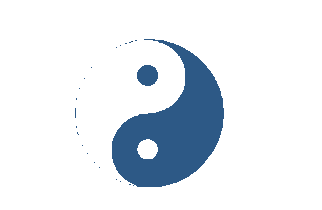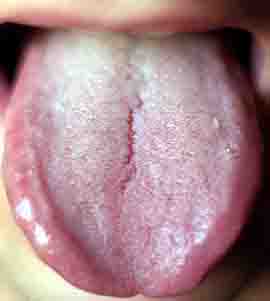|
Incidence of adverse effects during acupuncture therapy
Ernst G, Strzyz H, Hagmeister H
Humboldt University, Charité,
Campus Virchow Clinic, Anesthesiology;
Berlin / Germany
Abstract:
Introduction: Acupuncture is frequently used to treat chronic pain syndromes or
other chronic diseases. There exist several hundred casuistic reports about
partially life-threatening adverse effects. Aim of our study was to assess
adverse effects of acupunture during a normal treatment routine.
Methods: Acupuncture patients of 13 general practitioners and outpatient clinics
and of 16 healers were observed. By questionnaires gender, age, indications, way
of treatment and adverse effects were documented by the therapists.
Results: 409 patients with 3535 acupuncture treatment were included. 402
treatments (11,37%, 153 different patients) with adverse effects were observed.
Main side effects were small bleedings (2,9%), hematoma (2,2%), dizziness (1 %)
and other vegetative symptoms (2,74%). Other mentioned side effects (below 1%)
were fainting, nausea, prolonged De-Qi-effect (paresthesia) and increase of pain.
One patient with an hour lasting aphasia after acupuncture treatment was
reported.
Discussion: Assessing adverse effects by the therapists themselves contains a
high risk of underestimation. A bias can be supposed regarding life threatening
adverse effects like pneumothoraces. The other reported side effects however can
be assumed not to have this bias. More than one third of acupuncture patients
experience adverse effects while being treated with acupuncture. Most of them
are harmless. Small bleedings and hematoma are common. No local infection was
reported despite of several therapists, who used sterile needles without skin
desinfection. Acupuncture is a safe method but has like any therapistic approach
adverse effects.
Keywords
Acupuncture, adverse effects, side effects, hematoma, de-qi-sensation, bleeding,
infection
--------------------------------------------------------------------------------
Introduction
Acupuncture is one of several therapy methods of the Traditional Chinese
Medicine. In western medicine it is frequently used to treat chronic pain
syndromes or other chronic diseases. It is claimed, that acupuncture has no
adverse effects [1]. Complementary therapy methods are recommended as natural
[2] and „natural" is often used as synonym for harmless or without adverse
effects. In contradiction since the 70ies there exist several hundred casuistic
reports about partially life-threatening adverse effects (recent reviews in [3],
complete review in [4]). However no attempt to quantify these complications was
ever made. Systematic studies exist only in some attempts [5-7], incidences
numbers are normally estimated.
The issue is complicated by a broad variability of acupuncture methods differing
from country to country. In Japan the usage of permanent needling methods is
more frequent than in Europe causing serious complications. Some adverse effects
are typical for ear acupuncture (e.g. local infections) but not for body
acupuncture. Some special effects are inherent with associated techniques like
moxa-therapy (burning cone or sticks close to the skin or in contact with a
acupuncture needle) causing burns.
Aim of our study was to asses adverse effects of acupunture during a normal
treatment routine (normally 10 to 15 insertion of about 10 needles) in daily
practice. In addition potential correlating factors were examined regarding
their possible enhancing role.
Material and Methods
Acupuncture patients of 13 general practitioners and outpatient clinics and of
16 healers were observed. Two questionnaires were used. On the first gender and
age of the patients, indication for acupuncture treatment, acupuncture points,
treatment method and accompanying illnesses were documented. The second was used
after every treatment documenting adverse effects. Mentioned were bleedings,
hematoma, infections, neurologic abnormalities, faintings, vestibular symptoms,
nausea, prolonged deqi-effect and increase of pain. There was free space for
other observed adverse effects. Both questionnaires were filled out by the
therapists. Informed consent of patients for a „observational study on
acupuncture effects" were obtained.
Statistics
Data were processed descriptively including 95% confidence intervalls. In
addition correlations between nominal structured data were processed with Chi
square test, in case of low numbers with Fisher’s exact test.. A combination of
nominal and metrical structured data was processed by Student’s t-test, in case
of non-normal distribution with Mann Whitney-U-Test. Because most patients had
several treatments, data analysis was carried out both with numbers of patients
and numbers oft treatments. Correlations are reported if they are existing on
both levels. Level of significance is p < 0.01. Because of the explorative
character of the study significant results are only one measure for the strength
of the association, not a proof.
Ethics
Study method, questionnaires, patient information sheet and informed consent
sheet were reviewed by the local ethic comitee.
Results
The study took place december 1995 – december 1996. At all 409 patients with
3535 acupuncture treatments were included. 402 treatments with 153 different
patients adverse effects were observed. Descriptives are shown in table 1.
|
Adverse effect |
Number of treatments |
In
% of treatments (Confidence intervall) |
Number of patients |
In
% of patients (Confidence intervall) |
|
Without adverse effect |
3133 |
|
256 |
|
|
With adverse effect |
402 |
11,37 (10,3-12,4) |
153 |
37.41 (32,7-42,1) |
|
Small bleeding |
104 |
2,94 (2,41-3,55) |
54 |
13,20 (9,92-16,5) |
|
Hematoma |
79 |
2,23 (1,77-2,78) |
49 |
12,0 (8,83-15,1) |
|
Dizziness |
36 |
1,02 (0,71-1,41) |
23 |
5,62 (3,6-8,32) |
|
Fainting |
5 |
0,14 (0,046-0,33) |
3 |
0,73 (0,15-2,13) |
|
Nausea |
7 |
0,20 (0,079-0,41) |
5 |
1,22 (0,40-2,83) |
|
Other vegetativ symptoms |
97 |
2,74 (2,23-3,34) |
32 |
7,82 (5,41-10,9) |
|
Prolonged DeQi-effect |
17 |
0,48 (0,28-0,77) |
6 |
1,47 (0,54-3,17) |
|
Pain while needle is in place |
33 |
0,93 (0,64-1,31) |
22 |
5,38 (3,40-8,03) |
|
Pain after needle was removed |
13 |
0,37 (0,20-0,63) |
11 |
2,69 (1,35-4,76) |
|
Other side effects |
96 |
2,72 (2,20-3,31) |
41 |
10,02 (7,11-12,9) |
Table 1: Adverse effects (Number of treatments and afflicted patients)
Most frequent other vegetative side effects were fatigue and generalized
sweating. Other side effects were paresthesias and increase of symptoms after
removing of the needle.
Small bleedings and hematoma were often observed together and there exists a
correlation with the number of used needles. Small bleedings were observed less
often at female patients. Hematoma were observed less often in young patients,
on the other hand they expressed more pain. (All p < 0.01). As unprecedented
side effect a patient with an hour lasting aphasia after acupuncture treatment
was reported by one therapist.
Discussion
Assessing adverse effects by the therapists themselves contains a high risk of
underestimation. A bias can be supposed, the reported numbers might be too low.
This regards specially serious life threatening adverse effects like
pneumothoraces or other acupuncture-associated trauma where a therapist might be
afraid of possible legal consequences. Other reported side effects however can
be assumed not to have this bias. There was no monitoring to test the exactness
of the questionaires, this might lead to improper documentation. On the other
hand due to the multicenter character of the study some of this subjective
factors might be eliminated. But besides of this arguments the lack of serious
side effects might be not only because of methodologic reasons, but also because
of their low incidence rates.
More than one third of acupuncture patient experience adverse effects while
being treated with acupuncture. Most of them are harmless. The most frequent
side effects were small bleedings and hematoma. Vegetativ symptoms like fatigue,
but also awakeness, dizziness, changes in digestion and sleeping manners were
not seldom. Because of the subjective nature of those phenomena they should be
tested in a further study because of possible associations to acupuncture point
combinations or diagnosis. Yet 1.5% of patients reported symptom of prolonged
DeQi. Normally after needle insertion a certain feeling of dumb pain and
paresthesia lasting about one minute or as long as stimulation occurs is
reported by patients. Prolonged DeQi means this effect lasts more than five
minutes up to hours. There is no report about permanent neurological symptoms
neither it was observed in this study. Patients should be informed about this
possible effect and it’s harmlessness.
Most interesting are adverse effects which did not appear. No local infection
was reported despite of several therapists, who used sterile needles without
skin desinfection before inserting them. This corresponds to widespread
experience of acupuncture practising therapists, but was not yet reported in a
systematic form. Reported hepatitis-B infections in acupuncture patients [8]
occur because of unsufficiently sterilizing procedures of multiple used needles.
There is no evidence, however, that one way needles provide advantages if
multiple used needles are processed according to usual hygienic rules (in
desinfection solution after use, cleaning and controlling possible needle
damages, sterilizing with heat or autoclaving before use). Despite the results
of our study we recommend skin desinfection before ear acupuncture, because of
the bradytrophic character of the ear tissue. Also small infections there can
have a chronic course and might cause strong cosmetic changes.
Unfortunately we are not able to answer the very important question of possible
acupuncture effects on pregnant patients. Most of the therapists tend to avoid
several acupuncture points and to be very careful with this patients [9]
although observations are published which could not observe any side effects.
We did not analyze the risk of symptomatic treatment by acupuncture therapists
causing (fatal) delays in possible causal treatment approaches. This might be
the most dangerous side effect of any complementary treatment method.
Acupuncture treatment is only acceptable after adequate diagnostic procedures.
Specially healers should be aware of this aspect and legal consequences should
be drawn if therapists act not careful in this point. Obligatory additional
anamnesis before acupuncture treatment should at least cover bleeding or wound
heeling disorders, immune deficiencies, possible heart diseases (risk of
bacteremias), possible pregnancy, and existing anatomical abnormalities.
Conclusion
Acupuncture is a safe method but has like any therapistic approach adverse
effects. Few serious adverse effects were published in casuistic form but could
not be observed in our study. Bleeding, hematomas and vegetative syndromes are
common. Using sterile needles is obligatory, skin desinfection however might not
be mandatory in healthy, not immunsupprimized patients.
Literature
[1] Bischko J.: Akupunktur ; Schweiz Rundschau Med (Praxis) 1979 ; 68: 987.
[2] Ernst E.: Risiken komplementärer Therapieverfahren ; Fortschritte der
Medizin 1998; 1-2: 28-30.
[3] Norheim A.J.: Komplikasjoner ved akupunkturbehandling. Literaturstudie for
arene 1981-92; Tidsskr Nor Laegeforen 1994; 114(10): 1192-1194.
[4] Strzyz H., Ernst G.: Nebenwirkungen bei der Akupunktur; Der Schmerz Februar
1997 ; 11: 13-19.
[5] Norheim A.J.: Adverse effects of acupuncture ; Lancet 1995; 345: 1576.
[6] Andersson A., Carlsson C.A., Eriksson M.: Akupunktur-Frän Tro Till Vetenskap;
Liber Malmoe 1984: 124-126.
[7] List T., Helkimo M., Andersson S., Carlsson G.E.: Acupuncture and occlusal
splint therapy in the treatment of craniomandibular disorders: Part 1 . A
comparative study ; Swed Dent J 1992 ;16.
[8] Kent G.P., Brondum J., Keenlyside R.A., LaFazia L.M., Scott D.: A large
outbreak of acupuncture-associated hepatitis B; Am J Epidemiol 1988; 127:
591-598.
[9] Bahr F.R.: Akupunktur in der Gynäkologie und Geburtshilfe ; Gynäkologe 1994;
27(6): 369-374.
|



